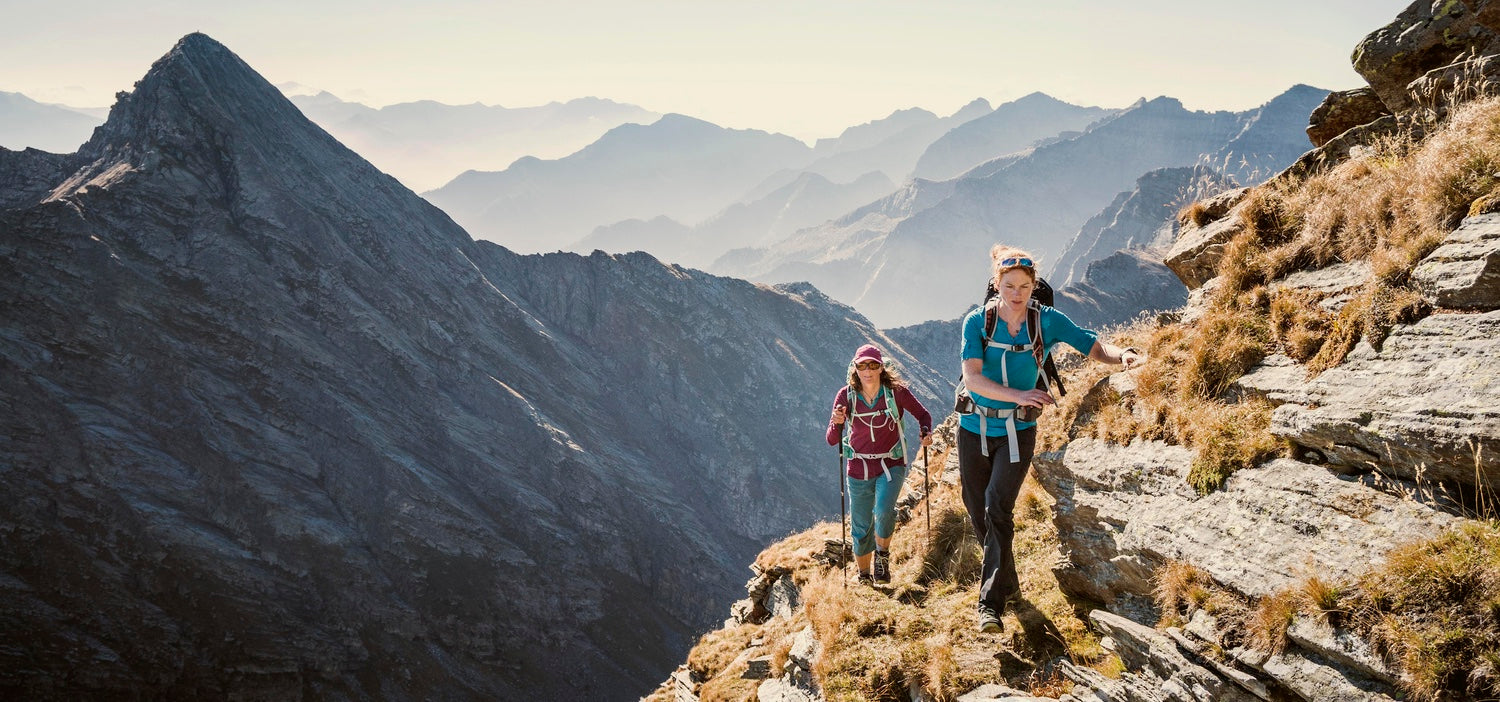
As important as studying terrain and potential weather, when heading out on any adventure the elevation you’ll encounter should be taken into consideration. In short, at higher elevations (especially above 5,000 feet) your body works harder, your respiration rate goes up, and your body loses water faster than it would at sea level. The fact that your body is working harder and breathing faster in an attempt to suck down more oxygen, has implications in terms of your water intake, and explains why drinking water at high altitudes is crucial. “Especially at altitude, you can’t miss hydration,” explains Karen Freeman, a Registered Dietician, Nutritionist, and Certified Specialist in Sports Dietetics. “Your respiration rate goes up with elevation. At lower altitude, running the same distance, you’re not going to get dehydrated as quickly as at higher altitude.”
According to the Wilderness Medical Society, your body loses water through respiration at high altitude twice as fast as it does at sea level. High altitude hiking, running, backpacking, and biking can also make you need to urinate more often and can also stop your thirst response, increasing your risk of dehydration. Remaining hydrated at elevation is a serious task. The Institute for Altitude Medicinerecommends drinking extra water daily when at high altitudes, and if going above 10,000 feet to also increase your intake of carbohydrates.

In addition to increased loss of water through respiration, high-altitude areas tend to have very low humidity and be more exposed to elements like sun and wind, so evaporation of water from the body increases as well. When you aren’t soaked in sweat, it’s easy to be tricked into thinking water isn’t being lost—but trust us, it is. In light of these increased risks, how much water should you drink at high altitude? The IAM recommends drinking an extra 1-1.5 liters of water daily at high-altitude, for a total of 3-4 liters. Ideally, those 3-4 liters would contain 2-300 grams of carbohydrates. Supplementing electrolytes is important for any high-output activity, but it becomes crucial at higher altitudes as well. Additionally, whether or not you’ll be encountering exceedingly hot or cold temperatures should factor into your hydration plan.
Hydrating often during your high-altitude adventure is key to avoiding dehydration: opt for a few quick sips every 15-20 minutes during activity vs. taking big chugs of fluids only when you stop for a break. Backpacks with reservoirs or water bottles that fit in front pockets are a great way to keep your hydration accessible. Make sure you bring enough water with you for your entire trip—and some extra in case something unforeseen keeps you out longer than you anticipated—or do some research on water sources available along the trail and how to safely filter them for drinking. Keeping all this in mind, along with the simple planning and consideration, will ensure you’re optimally hydrated for peak performance, and enjoyment, during your high-altitude adventure.